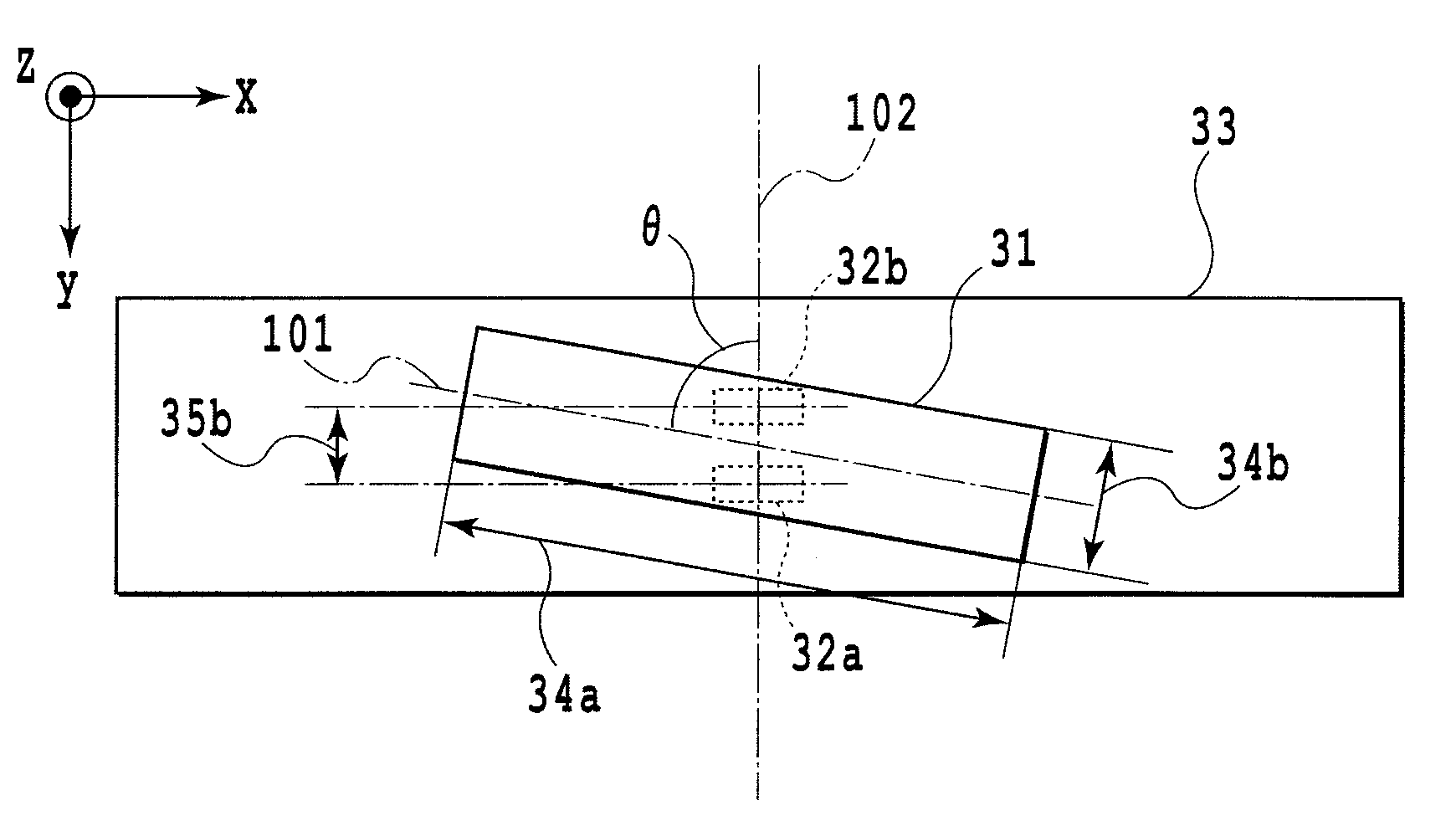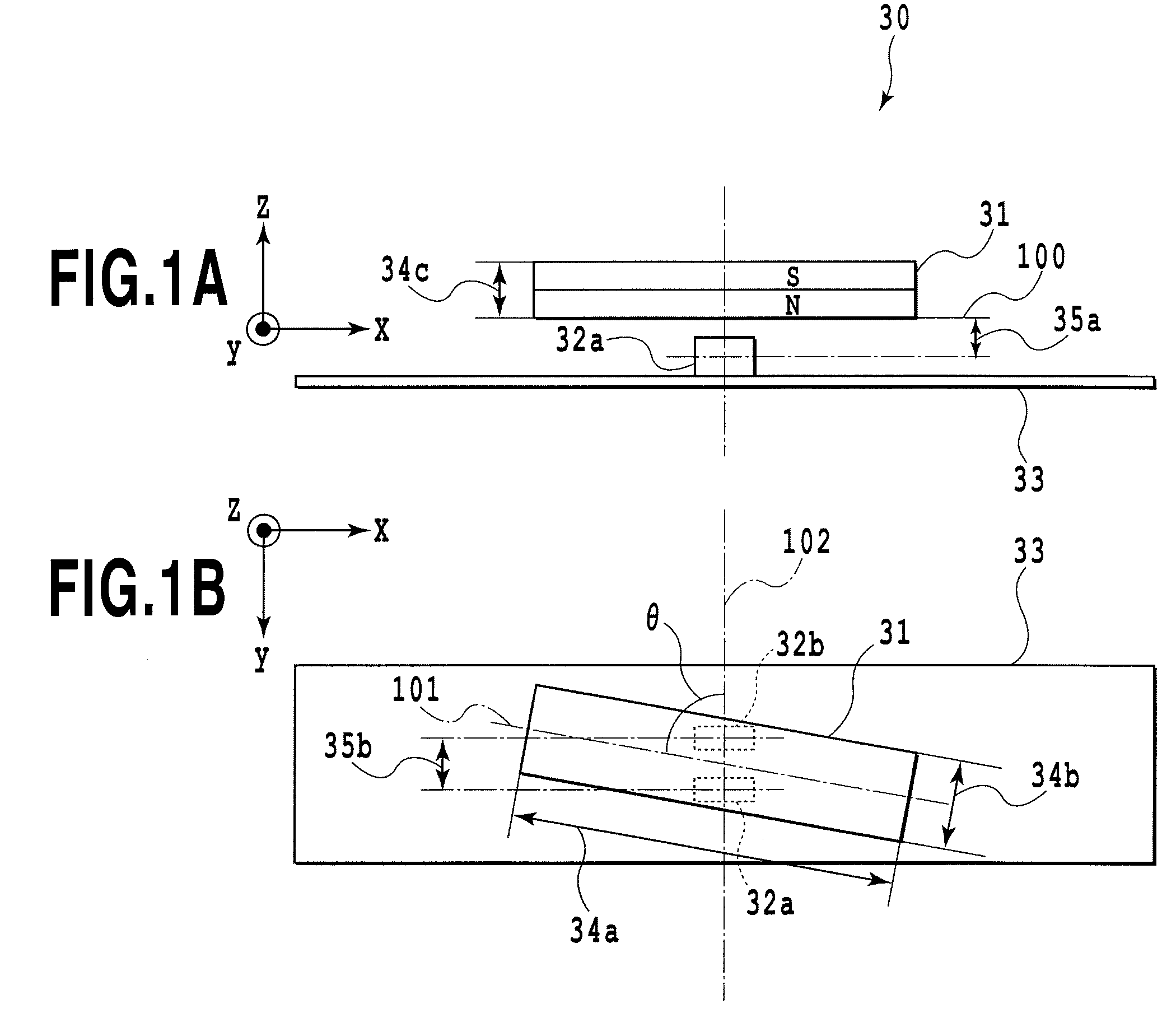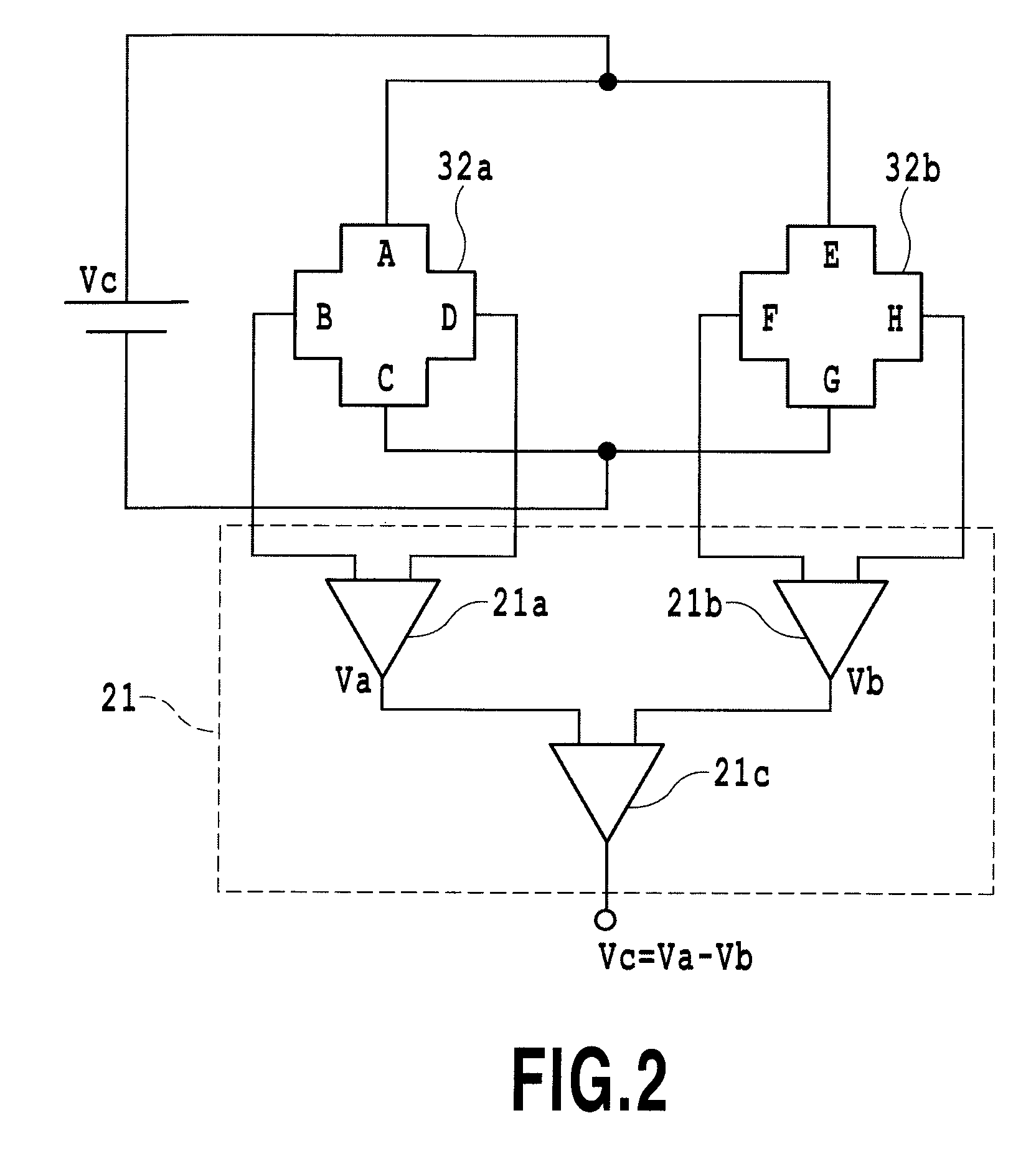Position detection apparatus
a detection apparatus and position technology, applied in the field of position detection apparatus, can solve the problems of inability to perform the position detection with the same high precision that is required by the lens position detection apparatus for camera zooming or auto focusing, and the instability of a magnetic characteristic may be increased, so as to reduce the effect of detection precision, simple circuit configuration, and high precision
- Summary
- Abstract
- Description
- Claims
- Application Information
AI Technical Summary
Benefits of technology
Problems solved by technology
Method used
Image
Examples
first example
[0082]A first embodiment of the present invention will be described with reference to FIGS. 1 to 9.
[0083]A position detection apparatus according to the present invention can be constructed using various shapes of magnets and various types of Hall sensors.
[0084]FIGS. 1A and 1B shows a schematic configuration of a position detection apparatus 30.
[0085]Reference numeral 31 denotes a rectangular solid magnet (a magnetic flux generation means) having one N-pole and one S-pole separately magnetized.
[0086]Reference numeral 32a and 32b denote each Hall Sensor composing a pair of two Hall sensors (magnetic flux detection means).
[0087]Reference numeral 33 denotes a substrate having the Hall sensor 32a (first Hall sensor) and the Hall sensor 32b (second Hall sensor).
[0088]The rectangular solid magnet 31 is magnetized in a direction orthogonal to the substrate 33 having the Hall sensors 32a and 32b.
[0089]The rectangular solid magnet 31 is arranged movably along an x-direction on a plane 100 f...
embodiment
[0111]An embodiment of the position detection apparatus 30 will be described.
[0112]A case where a position is detected within a range of 8 mm (±4 mm) at a resolution of 30 μm in a wide temperature range is described. An example of designing optimal values of parameters of each constituent component in FIG. 1 is described.
[0113]It is assumed that the length 34a of the rectangular solid magnet 31 in a long side direction X is 9.7 mm. The length 34b of the rectangular solid magnet 31 in a short side direction Y is 1.4 mm. The length 34c of the rectangular solid magnet 31 in a thickness direction Z (the length of the magnet in a magnetization direction) is 1.0 mm.
[0114]Also, it is assumed that the distance 35a from the plane 100 of the rectangular solid magnet 31 opposite to the Hall sensors 32a and 32b to the center of magnetism sensing section of the Hall sensors 32a and 32b is 0.5 mm. The distance 35b between the center of magnetism sensing section of the Hall sensor 32a and the cent...
second example
[0139]A second embodiment of the present invention will be described with reference to FIGS. 10 and 11. Here, the same reference characters are applied to parts corresponding to the above described first example, and an explanation thereof is omitted.
[0140]Multiple pairs of two Hall sensors may be combined in the position detection apparatus 30 of the above example of FIG. 1.
[0141]In this example, there will be described an exemplary specific configuration of a position detection apparatus that multiple pairs of Hall sensors are included and the size of magnet is reduced.
[0142]Similarly to the above described first example, a case where a position is detected with a range of 8 mm (+4 mm) at a resolution of 30 μm in a wide temperature range is described.
[0143]FIGS. 11A and 10B show an exemplary configuration of a position detection apparatus 50 using a magnet and Hall sensors according to the present invention.
[0144]Reference numeral 51 denotes a rectangular solid magnet magnetized i...
PUM
 Login to View More
Login to View More Abstract
Description
Claims
Application Information
 Login to View More
Login to View More - R&D
- Intellectual Property
- Life Sciences
- Materials
- Tech Scout
- Unparalleled Data Quality
- Higher Quality Content
- 60% Fewer Hallucinations
Browse by: Latest US Patents, China's latest patents, Technical Efficacy Thesaurus, Application Domain, Technology Topic, Popular Technical Reports.
© 2025 PatSnap. All rights reserved.Legal|Privacy policy|Modern Slavery Act Transparency Statement|Sitemap|About US| Contact US: help@patsnap.com



